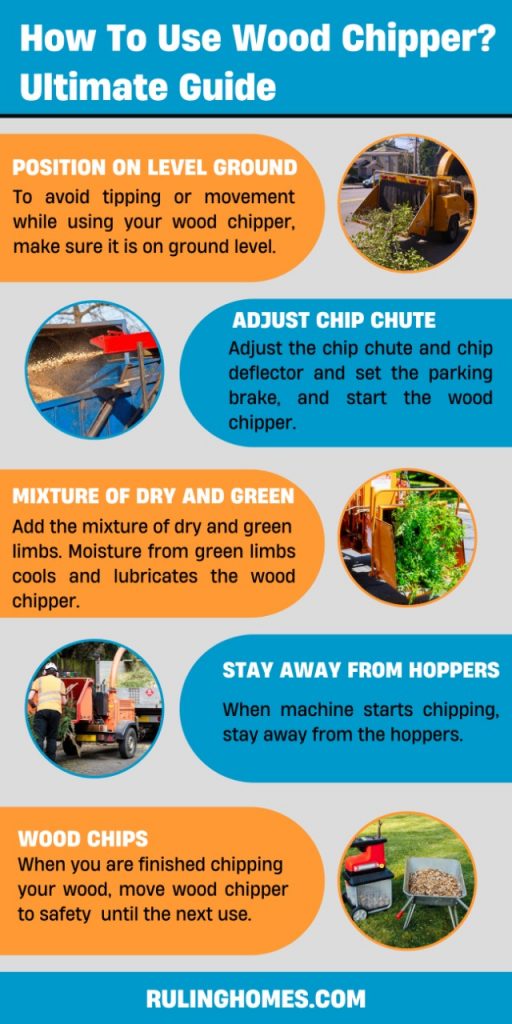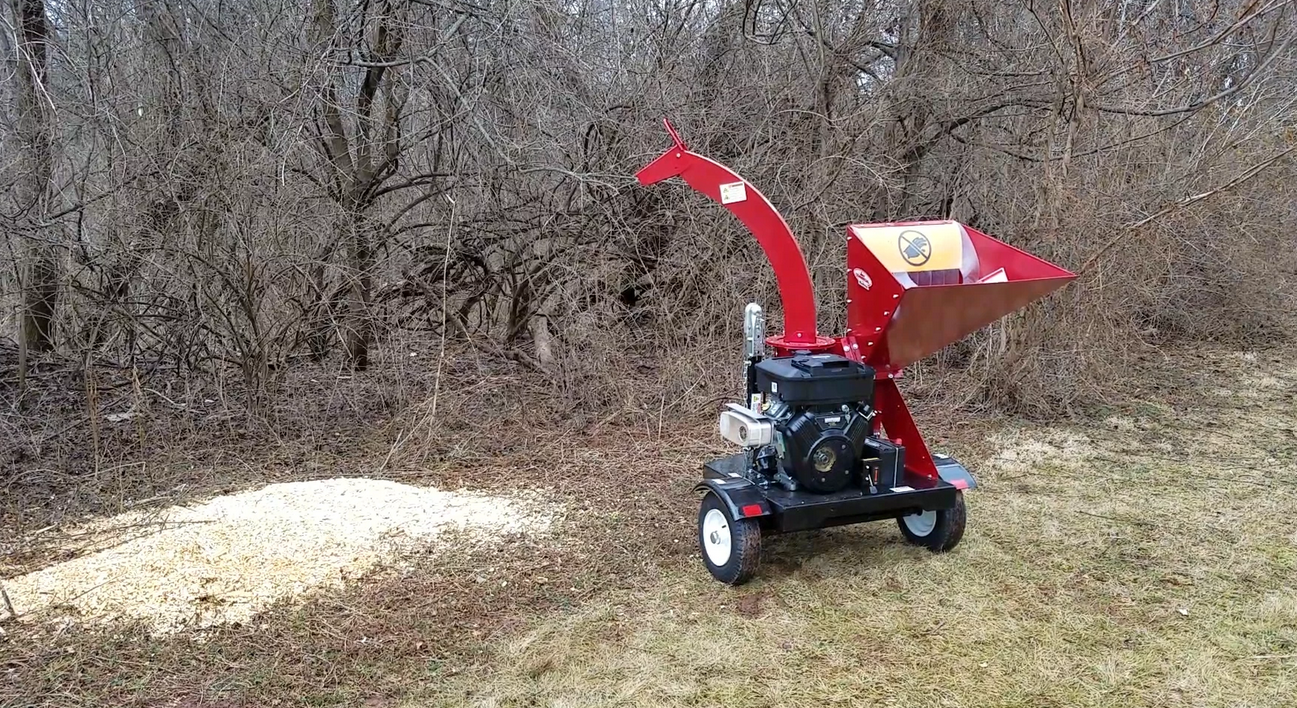Using a wood chipper involves a few easy steps.
- First position the wood chipper on a leveled ground.
- Adjust the chip chute and chip deflector and set the parking brake; start the wood chipper.
- Add the mixture of dry and green limbs.
- When the machine starts chipping, stay away from the hoppers.
- When you are finished chipping your wood, move the wood chipper safely until the next use.
Now let us discuss the detailed process of using the wood chipper.
Table of Contents
Here Is A Complete Guide for Using A Wood Chipper
1: Position on Level Ground
Before initiating the process, make sure your wood chipper is on land and leveled on a surface to stop tipping or movement during operation.
2: Adjust the Chip Deflector and Chip Chute
The chip deflector and chip chute allow you to regulate the space and direction the chips are thrown. The best Wood Chippers have two clamp knobs on the deflector, adjust them to regulate the area. Rotate the chip chute in the direction you want the chips to accumulate.
3: Set Hand Brake and Begin the Chipper
Whether you’re using a tractor or other equipment to haul your chipper, make sure to activate the hand brake before turning on the machine. This may eliminate the probability of your hauling equipment moving during the chipping process.
Also Read: How to start a Sithl Chainsaw
4: Feed the Blunt End First
When putting wood in the wood chipper, you have to start with the blunt end first because the material will feed through the machine more consistently and easier in this manner.
5: Feed Mixture of Dry and Green Limbs
As you collect your material to be put into the chipper, consider adding a mixture of green and dry limbs. The moisture that’s often found in green limbs will help to cool and lubricate the wood chipper’s blades as it’s running.
6: Stay Away From The Hopper
As you feed the branches in and the machine starts chipping, stay away and off to the side. It will stop the debris from hitting you as pieces may eject.
7: Put the Wood Chips to Use
After you will complete chipping your detritus, collect the wood chips and put them to good use!
Also Read: What Types of Paint to Use On Wood Deck?
Safety tips
Safety is extremely important when using a wood chipper. Wood Chippers are light-duty equipment and need to be operated using caution. Following are a few recommended safety tips:
- Before operating any rental equipment, make sure to read and understand the instruction manual.
- Use the hand brake. This ensures that there are not any unforeseen situations where the machine starts to maneuver unintentionally.
- Wear eye protection to let the small pieces of debris away from flying into your eyes
- Ear protection should be worn because the machines are often loud.
- Wear clothing that fits on your body to stay from getting clothing caught in the machine
- Wear gloves to protect your hands
- Children and animals must be kept far away from the machine.
- Do not attempt to dislodge wood branches while the machine is running.
- Do not feed foreign materials. (string, stones, metal, plastic, textile, etc.)
- Do not use a shovel or fork or a fork to feed the machine with garden waste.
Also Read: How to measure Chainsaw Bar?
Cleaning and Maintenance
To make sure the area is safe and clear:
- Clean up yourself.
- Confirm the place around the chipper is safe and clean before using, and take the time to wash the power tool with each use filters can clog, and blades can get clogged with bits of wood and debris.
- Follow a maintenance schedule so that the machine continues to work appropriately without risking damage to the wood chipper, you, or others.
If you use chainsaws (or Miter Saws), you might not have to go through all the cleaning and maintenance procedure as using them is quite straight forward. You can cut down the trees and turn them into smaller planks, which yield wood chips as the side material. As compared to the use of chainsaws, using Wood Chipper requires you to be vigilant at all the times.
Also Read: How to Sharpen a Chainsaw?
Final Thoughts
It’s important always to remember to wear recommended eye and ear protection, work gloves, and tight-fitting clothing when using a wood chipper. Make sure to read the whole operator’s manual before operating wood chippers or other kinds of equipment. You can use the wood chips for your plant’s benefits, read what to do with the wood chips for more information.

I grew up on a small farm in New Jersey. We had a big family because my parents, my uncles and aunties all were living together on this farm so, you can imagine, it was always over crowded with people. But living in farm was really great because we had to do everything on our own and I learned so many things from my parents and uncles and aunties and that is where I found my passion for fixing things, whether it is renovating or designing, I was always there. Read more


